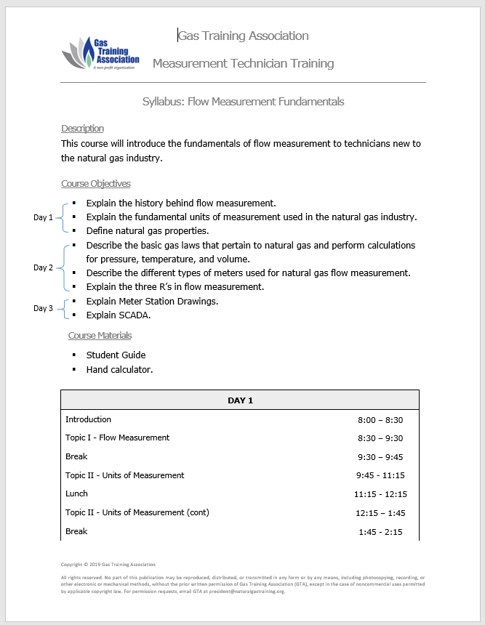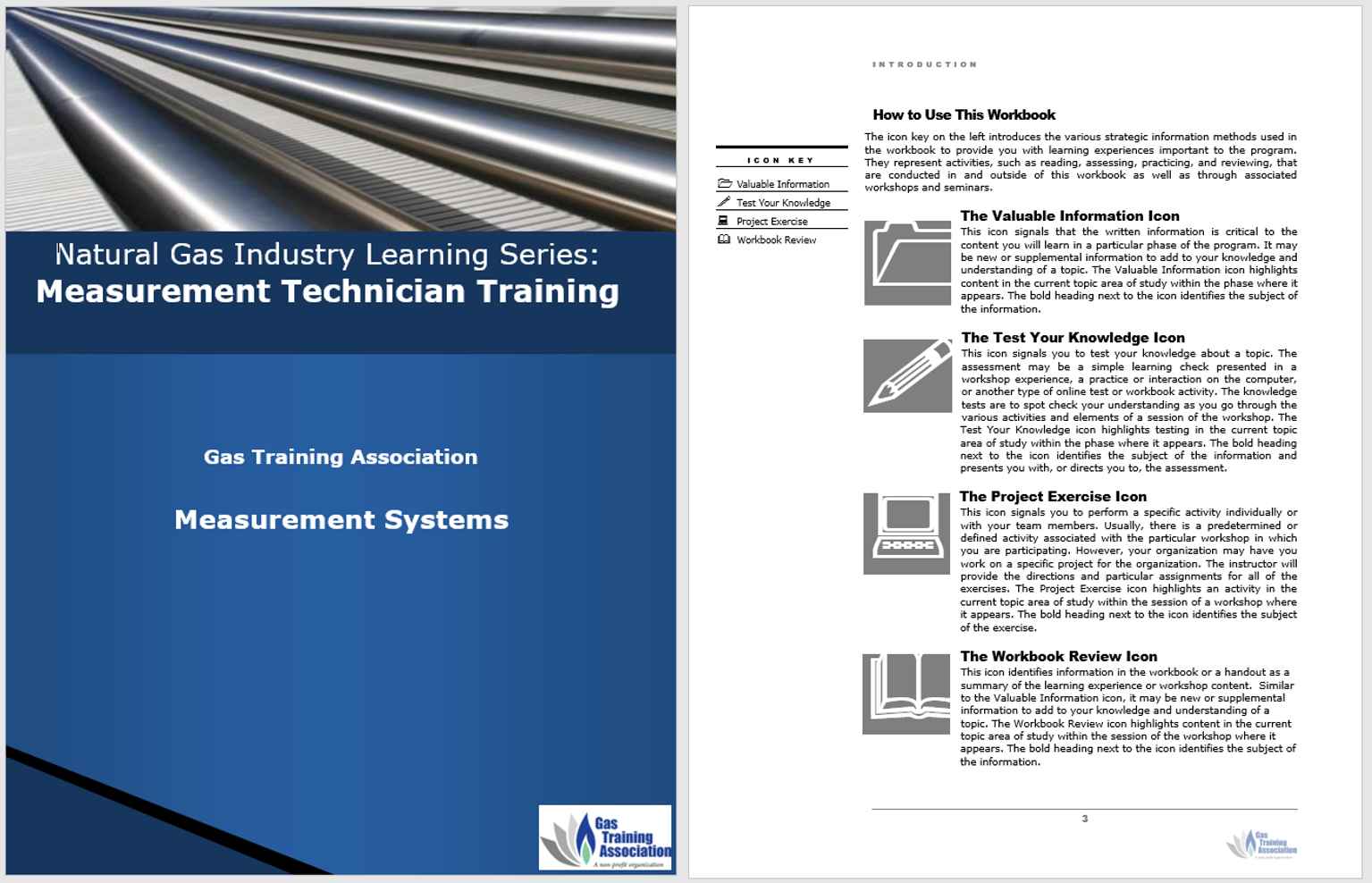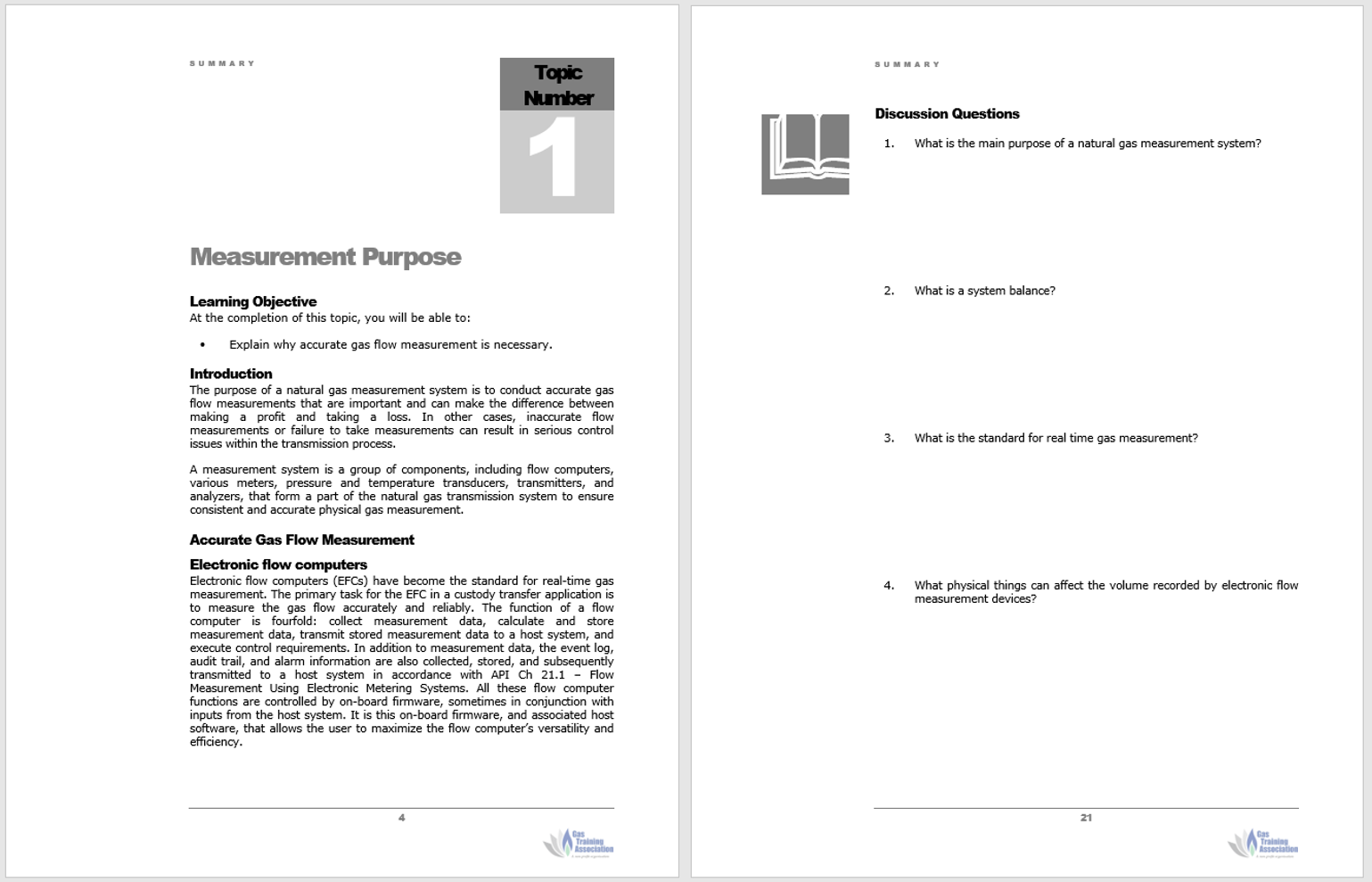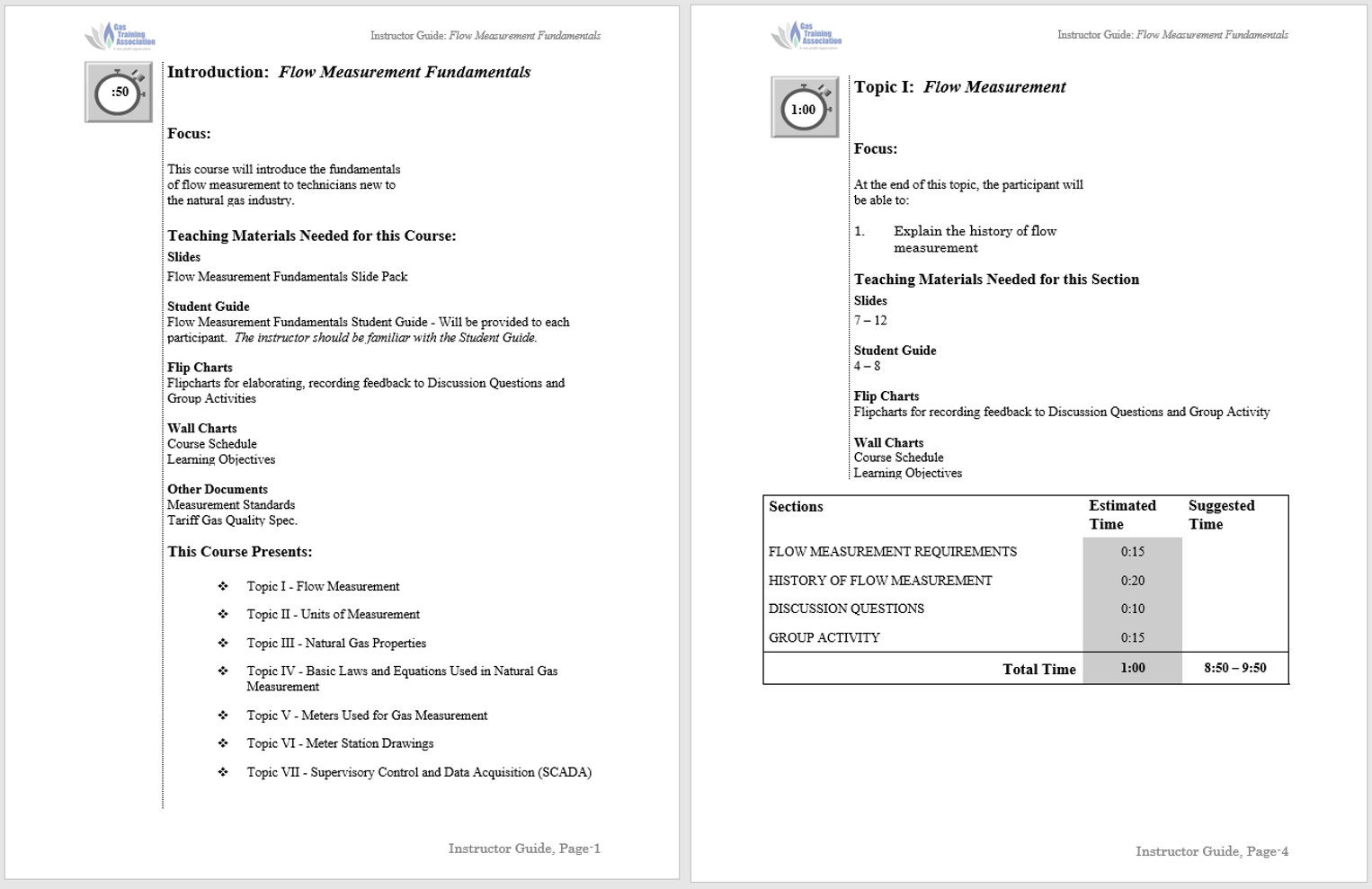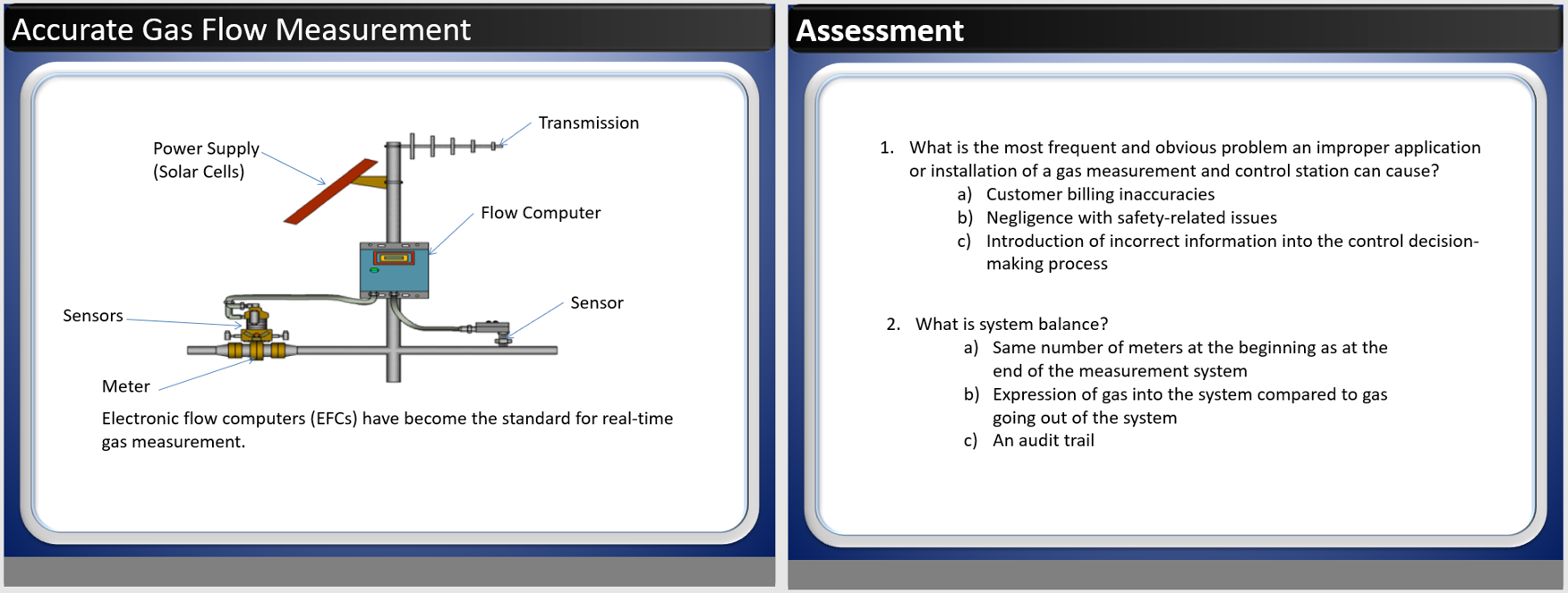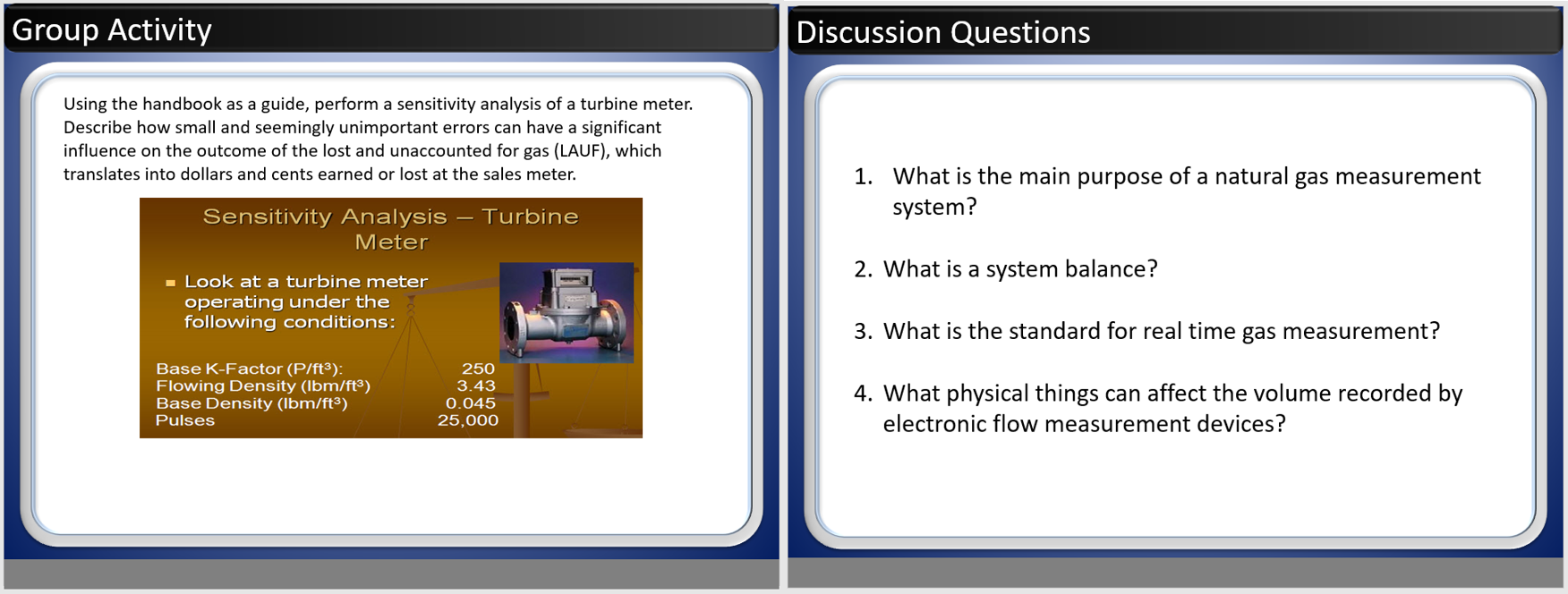|
Basics
of Electronic Flow Measurement (EFM)
|
Primary hardware requirements for Electronic Flow Measurement (EFM) ... real-time measurement applications ... 4-20 mA loop ... verification and calibration requirements and procedures ... American Petroleum Institute (API) Chapter
21 standards for electronic gas measurement ... how measurement errors occur ... communications requirements ... power system requirements.
|
|
Cone
Type Meters
|
Cone meter applications ... components ... principles of operation ... installation practices ... gas service installation options ... installation errors and effects to beware.
|
|
Coriolis
Meters
|
Major functional components of a Coriolis flowmeter ... how a flowmeter interfaces with peripherals ... how a Coriolis flowmeter measures mass flow ... volumetric flow and density ... various Coriolis flow tube geometries ... bent tube versus straight tube design ... operation of flow detectors ... importance of temperature sensors in Coriolis flowmeters ... best practices for Coriolis flowmeter installation ... Coriolis flowmeter proving and troubleshooting.
|
|
Installation
Practices of Measurement Equipment
|
General installation considerations for ultrasonic, turbine, orifice, Coriolis, positive and displacement meters ... gas quality assessment instruments ... secondary
and tertiary instrumentation.
|
|
Gas
Flow Computers
|
Flow computer system components ... flow computer inputs, outputs, communication requirements and applications ... flow computer power source
options ... physical installation considerations ... calibration procedures ... verification following installation and configuration ... operation of Bristol 3350-20B, Bristol 3350-25B, and Bristol 3335-RTU flow computers.
|
|
Orifice
Meters
|
Importance of accurate orifice measurement ... American Gas Association (AGA) 3 and American Petroleum Association (APA) 14.3 standards ... orifice measurement ... gas laws used in orifice measurement ... continuity of flow applied to gas flow,
laminar flow and turbulent flow ... Reynolds number as it applies to gas flow ... functions of primary and secondary elements in orifice measurement ... common flow measurement problems with orifice
plates ... meter tube inspection parameters.
|
|
Positive
Displacement Meters (PD)
|
Theory of PD meters ... how pressure, temperature, and specific gravity affect gas measurement ... how meter proving helps eliminate measurement errors ... importance of routine inspections and PD meter maintenance.
|
|
Turbine
Meters
|
Theory of operation of the various turbine meters, American Gas Association (AGA) 7 standards ... operation, maintenance, troubleshooting, design features and components of a turbine meter ... components of
turbine meter runs ... accessories and requirements of field/factory proving and calibration.
|
|
Ultrasonic
Meters
|
Ultrasonic flow meter terminology ... American Gas Association (AGA) 9 and 7 standards ... principles and use of ultrasonic signals in measuring flow ... bounce-path and chordal-path ultrasonic
flow meters ... maintenance and inspection requirements.
|
|
Verification
and Calibration
|
Pipe-work containing a primary element (the meter) ... secondary elements (pressure, temperature, density and gas composition) ... and tertiary elements (flow computer, Remote Terminal Unit [RTU], and Supervisory Control and Data Acquisition [SCADA]) ... use of ancillary equipment (e.g. flow conditioner, gas sampler, filter, control valves, environmental shelter, heat tracing, etc.) ... importance of calibration and verification in keeping systems within specification.
|


